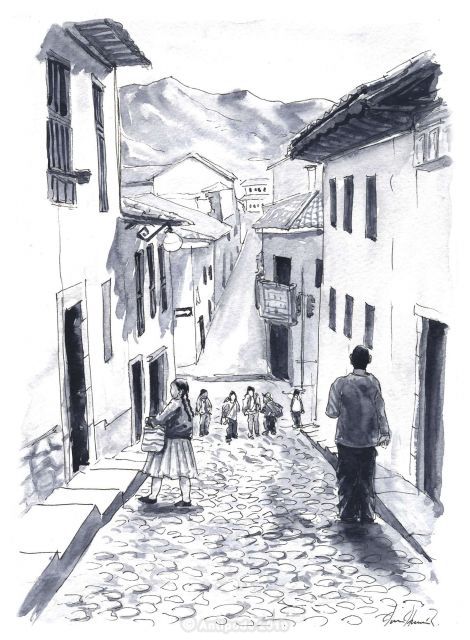

What are the historical origins of Cusco city in Peru?
Story of Cusco :
Here, more than elsewhere, the Peruvian syncretism take all its importance. Beating heart of the Inca Empire 5000 years ago, this is also a main center for the sacred art, with the Cusquenian art, Christian… so Spanish! The constructions themselves are an intrinsic mix of this two legacies, the artistic representations mix chicha and cuy in The Last Supper…. The story of Cusco city is extremely rich and resume alone the different steps of Peru’s evolution.
The foundation of the city is subject to legend, the one of Manco Inca and his wife Mama Oclla, emerging from Titicaca Lake and sent by the God Viracocha to find a land where their golden baton will hammer in the floor, the one who saw the extension of the biggest and powerful civilization.
The name of “Cusco” comes from Quechuan language, “Qosqo”, and means “world’s navel”. For the Incas, this city wasn’t more than the center of the Universe. After a slow and unequal development during centuries, the Inca Pachacutec started in 1438 intensive urban reforms: from a little town in the province made of straw and dried sludge, he transformed Cusco into a dynamic city, of primary importance, the proud capital of an empire covering almost all South America.
First of all, he reorganized the urban plans of the city; he built it with a form of a puma, this sacred animal from the Andean religion, the head is Sacshayhuaman citadel and the body is the main square of Haucaypata. Then, he developed agriculture around the city thanks to the construction of many aqueducts and agricultural terraces, like the site of Tipon or Moray. Finally, with the administrative organization of the Empire, Pachacutec unified the different versions of culture and Andean religion, imposed Quechua from Cusco to all the annexed territories and the Inca religion is imposed and mix with local traditions. He transformed Cusco into a major and spiritual city, the 15 000 habitants are in the vast majority nobles, priests and servants. Ceremonies and rituals are objects of constant pilgrimages in the whole kingdom. Cusco became THE political, administrative and cultural center and the main axis ruling the religious life of the continent.
70 years, this is the time during which Cusco knew what glory was. The city radiance the most important of South American has been cut it off by the arrival of Spanish, profanation and pillage of those invaders with strange skin. All the efforts to destroy and eliminate have been concentrated in Cusco because they knew that their triumph would be the capture of the imperial city. The shock is intense for this civilization who seemed to be just at the beginning of its expansion and glory.
During a long time, under the Spanish domination, Cusco kept being an important place. For Spanish people, this was where they had to enforce the most the new colonial rules and make accept forcibly the Christian religion. It is necessary to transmit the reflection of the new domination over the highest center of Inca civilization (Hence the construction of Santo Domingo church in Qoricancha or the cathedral onto the Inca palace). Symbolically, they had to convert the empire heart to have all the empire submitted.
On the other hand, for the natives, this is a place catalytic of reclamation; the reclamation that most impacted the colonial history is the one of Tupac Amaru II in 1781. This months of fight contaminated the provinces and the colonial order has been really disturbed; that explains the cruelty of the repression. Moreover, Cusco maintained at this period a key player as trade hub, between Lima (only official port of South America to Europe) and the silver mines of Potosi.
But with the Inca Empire finally subdued, between the development of a new capital on the coast and the obsession of conquerors for the richness of Potosi Cerro Rico, Cusco was inevitably forgotten. It became a provincial town like another and has been competed with the economic development of younger cities like Arequipa or Iquitos. Cusco will be saved thanks to the “rediscovery” of Machu Picchu in 1911 by Hiram Bingham (and his book publication, “Lost city of the Incas”).
At the end of the 20th century, the Peruvian government and Cusco religion invested huge sums in touristic infrastructures and one by one, the number of tourist started to overrun streets with paved stones to balconies made of carved wood, wondering at the Inca rests and giving back a reason to be proud of the city and its habitants after decades of traumatic history.
It should also be noted that many earthquakes destroyed the colonial constructions but saved Inca foundations; revenge from the Gods or better archaeological technic? In any case, the result if the picture of Señor de los Temblores, protector of Cusco and its exceptional heritage.



